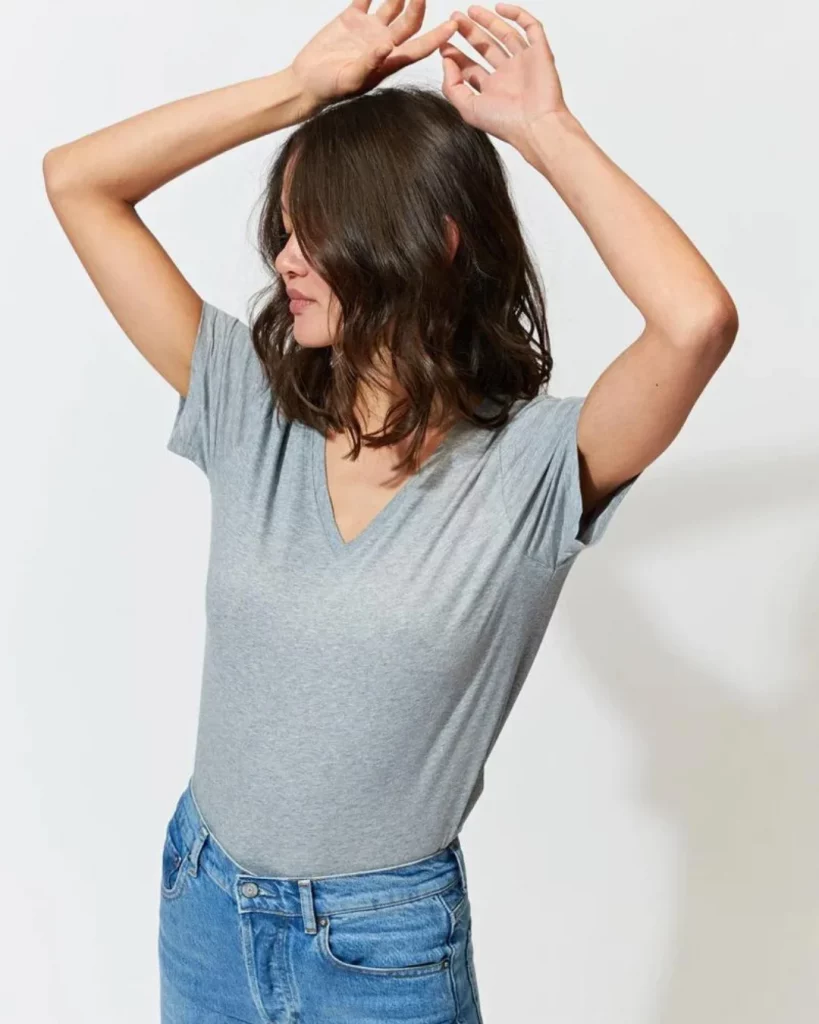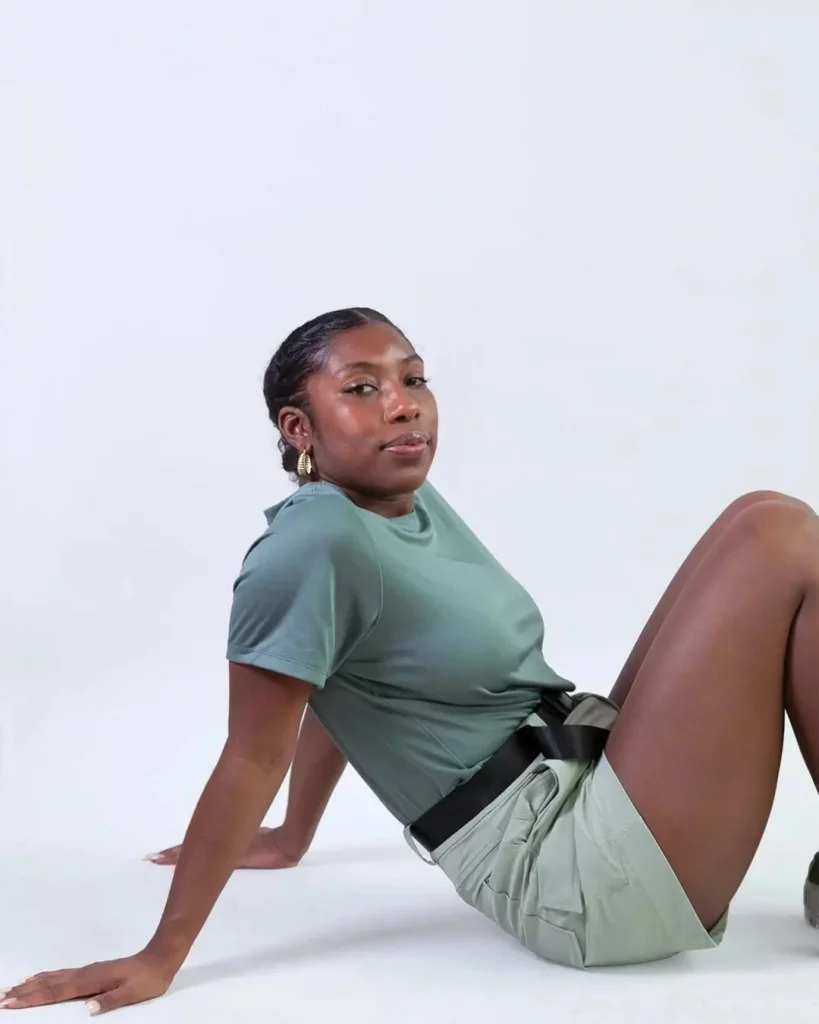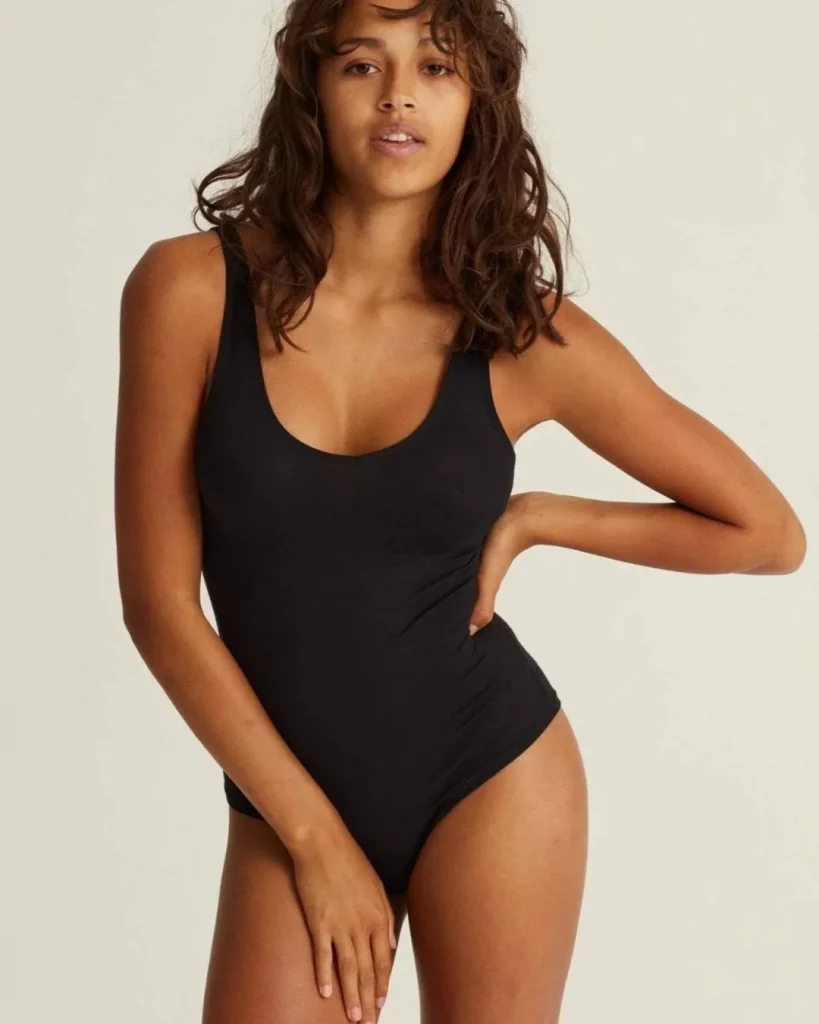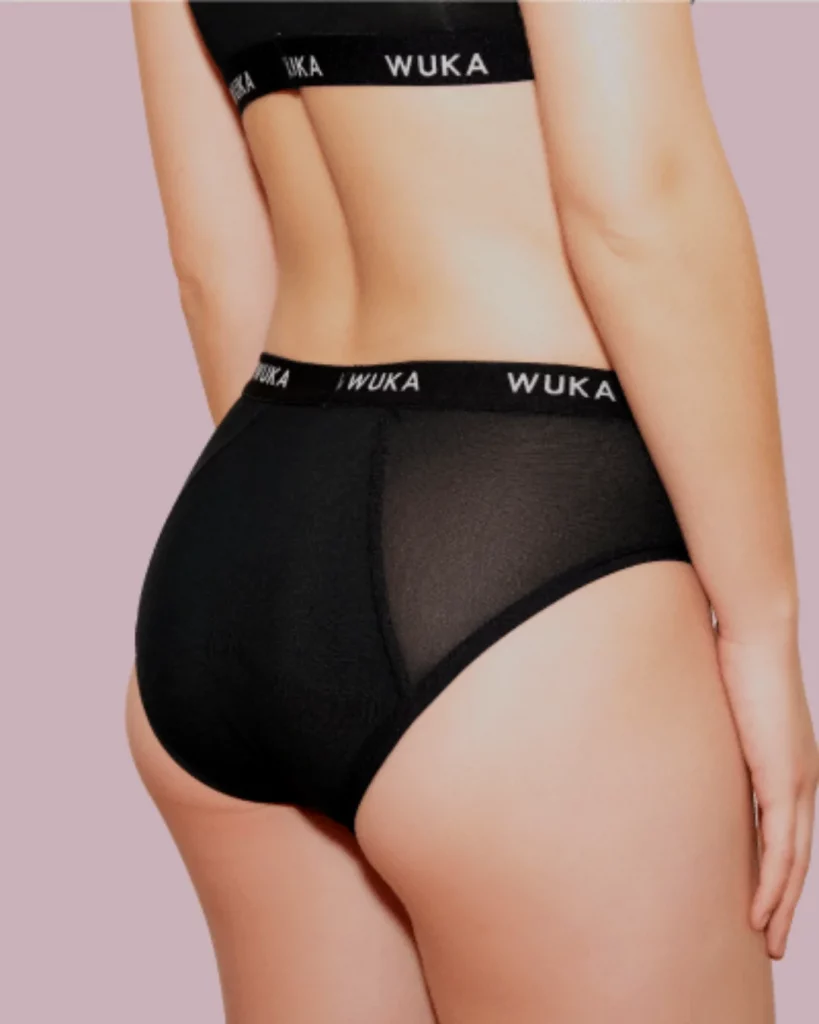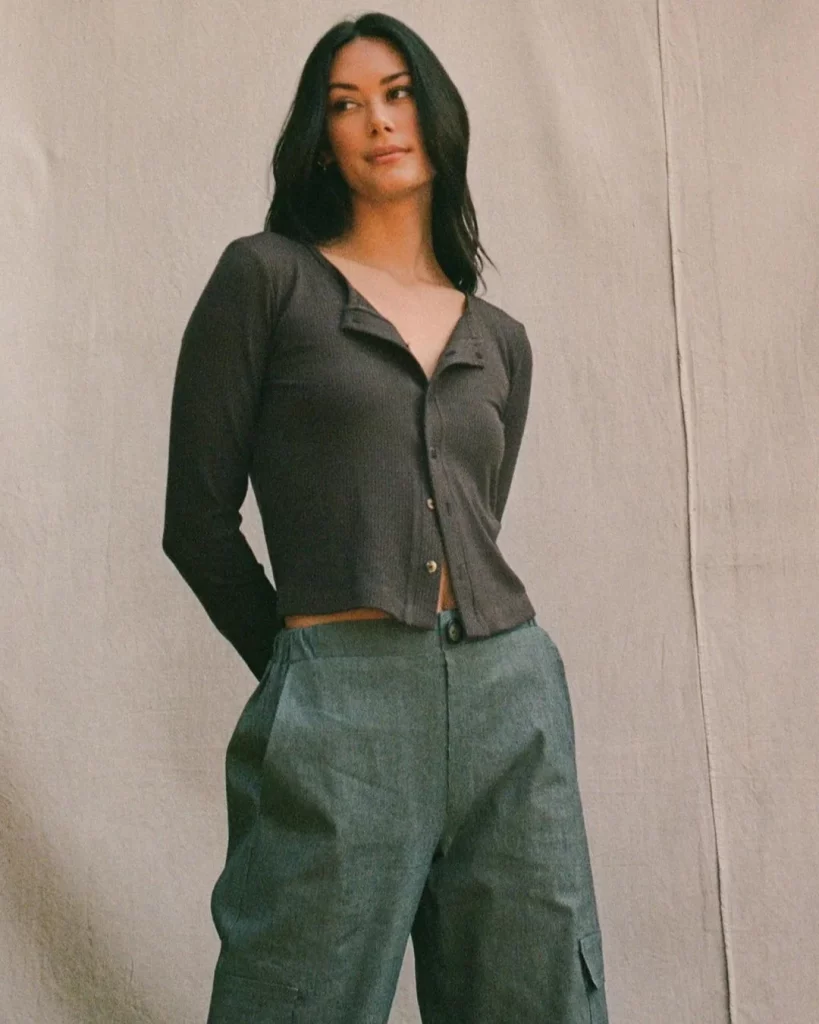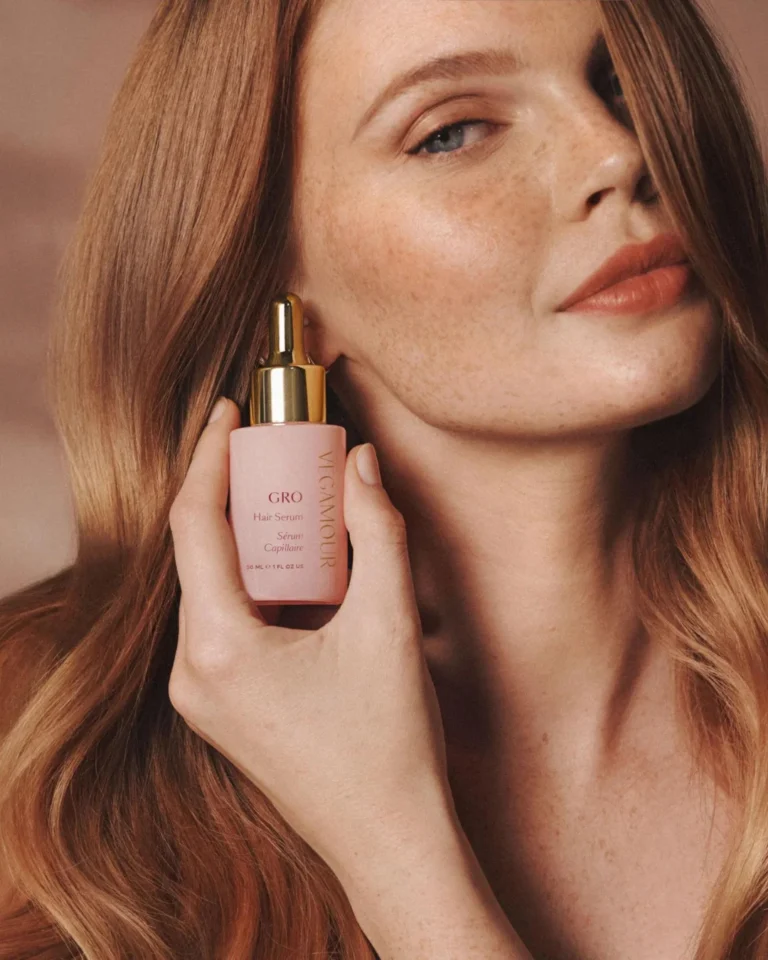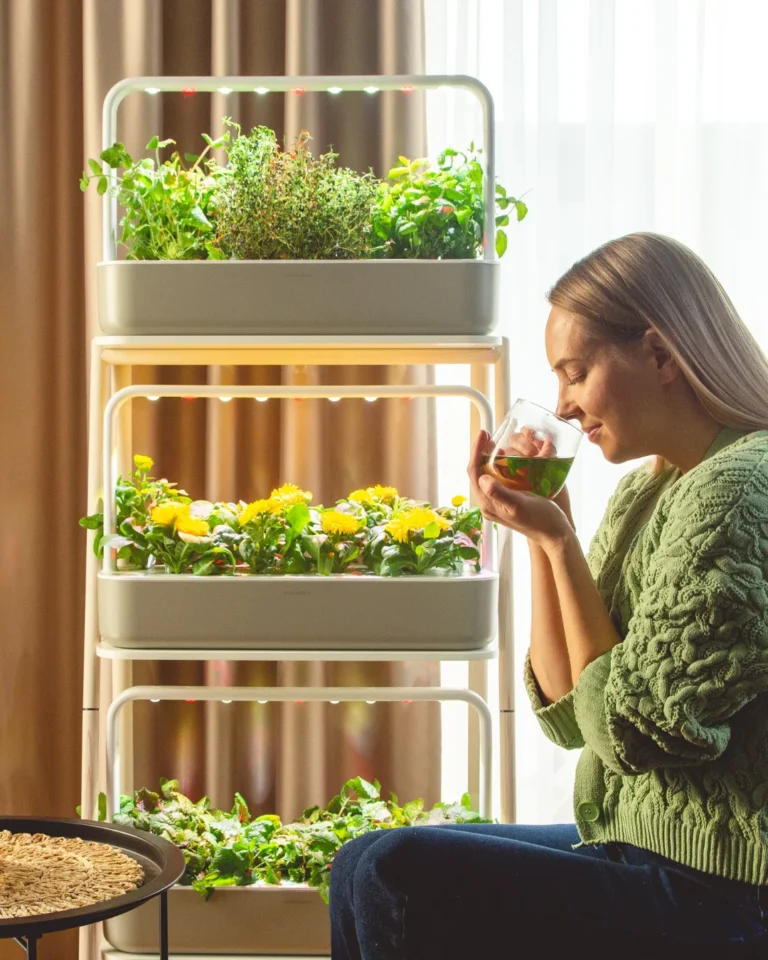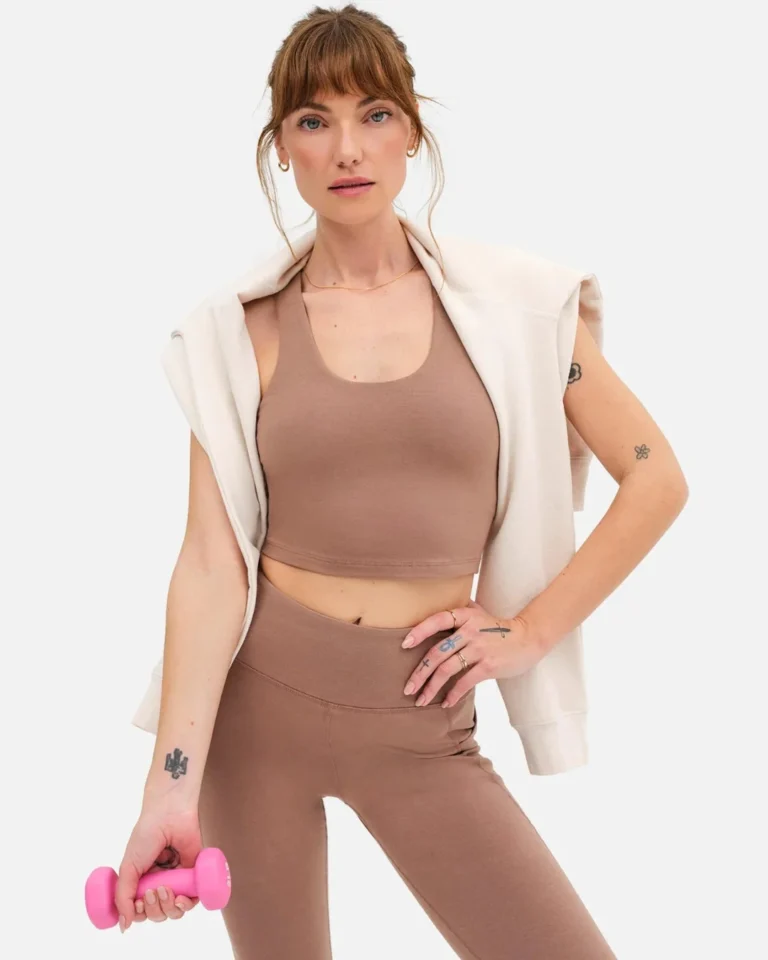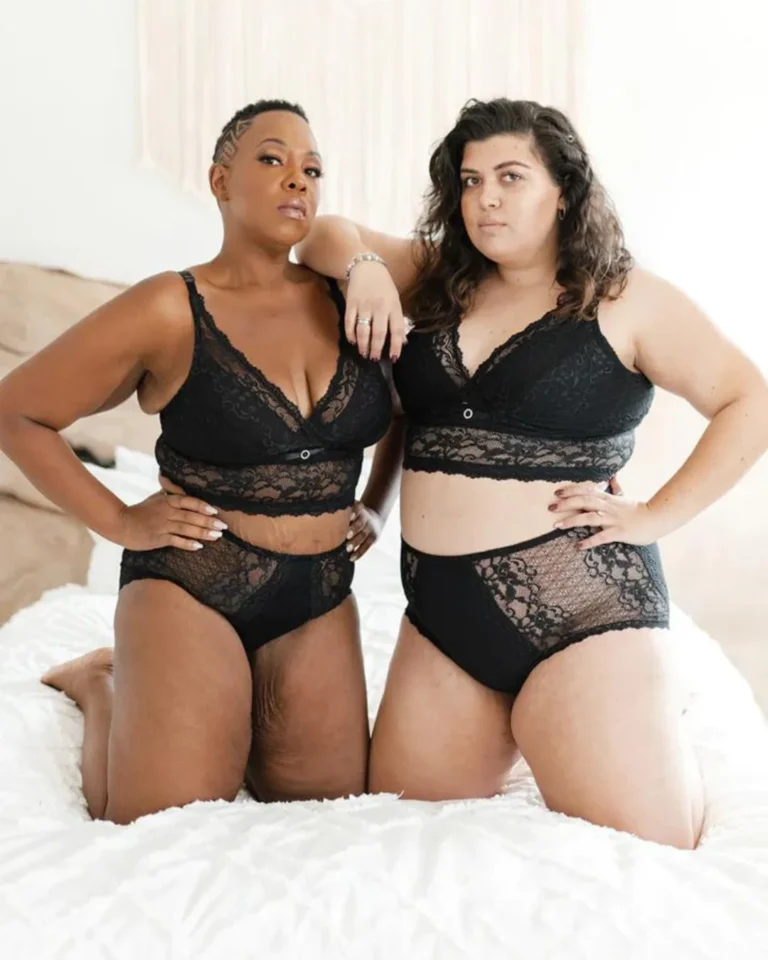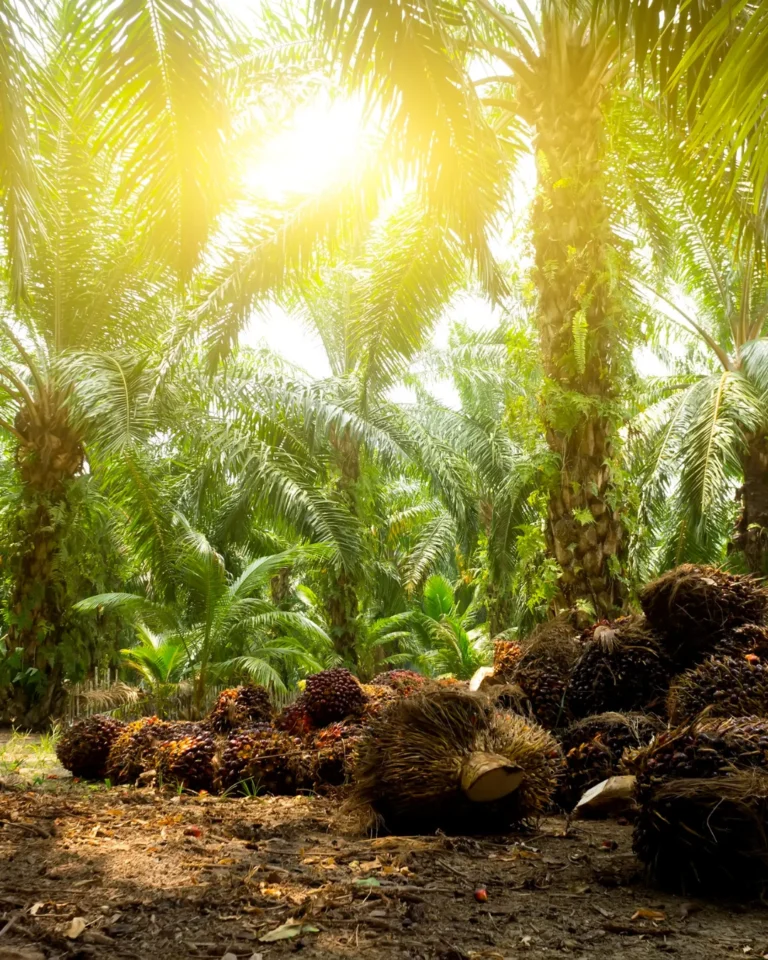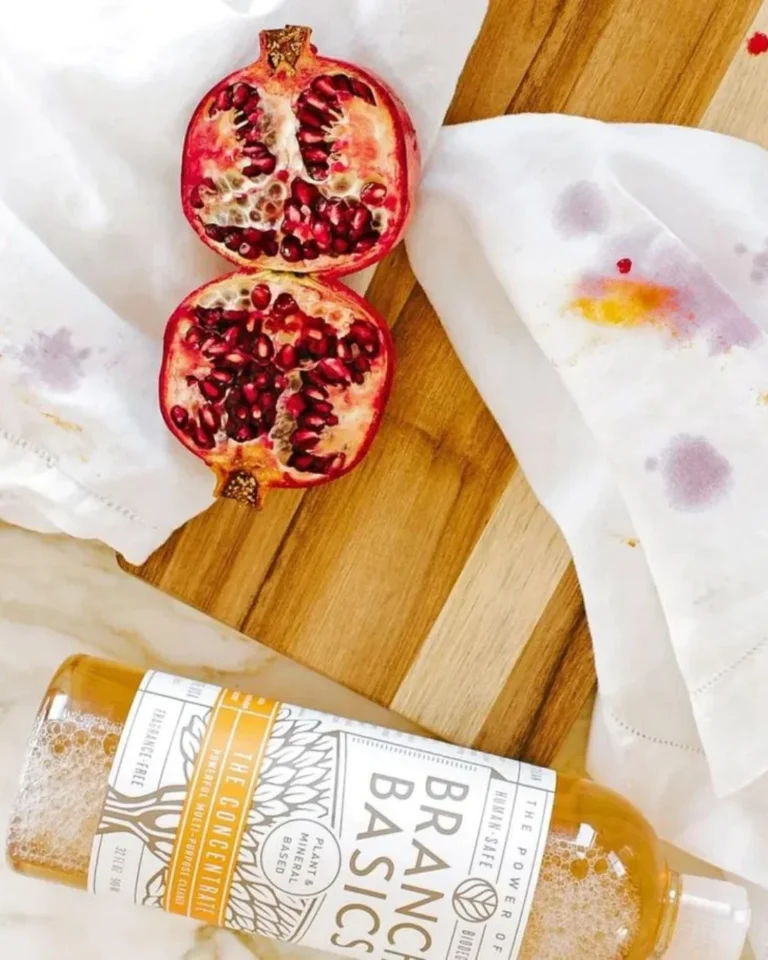SKL is reader supported. When you buy through links on our site, we may earn affiliate commission. Learn more here.
Seems like Modal fabric managed to take over the entire sustainable fashion sphere quite effortlessly. But did you know that the production process of Modal is almost equally as impressive as the array of advantages that come along with this environmentally-friendly textile? Let’s zoom in on the most asked questions about Modal fabric.
The Ultimate Guide To Modal Fabric.
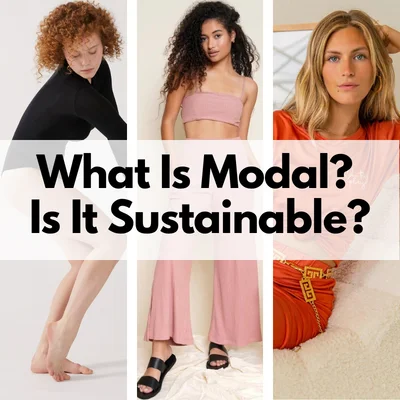
Would it surprise you to hear that most of your favorite sustainable fashion activists have been donning dresses made of trees? It absolutely shouldn’t!
They are not rigid or fiddly. On the contrary, chances are that you probably couldn’t tell that some of the most raved-about staples –including underwear, sweaters, and eco-hoodies – worn by the slow fashion crowd are, in fact, made of beech tree cellulose.
But what does Modal fabric feel like? How is Modal made? What are the advantages? And most importantly, how ethical and sustainable is Modal? Read on to find answers to every single most-asked question about the properties of Modal.
Spoiler alert: the super soft and stretch bio-based textile will absolutely blow your mind.
What Is Modal Fabric?
Modal is a type of rayon made from high-quality cellulose derived from beech trees. But given the chemicals used in its production, Modal fabric is typically described as a man-made fiber rather than all-natural.
Breathable and absorbent, this cotton alternative was first manufactured in Japan in 1951 as a substitute for silk. Today, most Modal is produced by the Austrian company Lenzing AG.
Unlike regular rayon, Modal’s structural properties make it way more resistant to shrinking and stretching when wet. This means that the fabric has the fantastic ability to withstand excessive moisture all while being significantly more strong and more lightweight than rayon.
Consequently, many brands use Modal fabric blended with other fibers like cotton and spandex to add even more strength when creating underwear, pajamas, and even sustainable home goods like bed sheets and towels.
But how is Modal fabric manufactured? We hear you ask. Well, that’s the most interesting part!

How Modal Fabric Is Made?
The manufacturing process of Modal fabric involves spinning reconstituted cellulose mainly from beech trees.
- First, manufacturers harvest beech trees and then chip them to extract the cellulose from their pulp.
- Next, it’s time to form sheets from the extracted cellulose and soak them in sodium hydroxide. However, unlike viscose rayon, Modal fabric requires significantly less sodium hydroxide which makes the entire process way more sustainable
- When the first round of soaking is complete, the sheets are broken into smaller pieces and get soaked for a second time–now in carbon disulfate. This results in the formation of an orange substance called sodium cellulose xanthate
- The sodium cellulose xanthate is, once again, dipped in sodium hydroxide. Then, it’s time to put the subsequent liquid solution through a spinneret to create the fibers
- Lastly, the fibers are soaked in sulfuric acid to form yarn, and voila!
As soon as the bleaching, washing, and drying process is complete, Modal fabric is ready to be turned into your favorite sustainable dress, undies, or tee.
Properties Of Modal Fabric
Now that we have a pretty good idea of what it is and how is it made, let’s go over the properties of Modal and the benefits of using and wearing Modal fabric.
Is Modal fabric stretchy? Yes, this sustainable textile is extremely flexible and comfortable which makes it ideal for wardrobe basics like t-shirts and athletic wear.
What does Modal fabric feel like? Modal is very soft to the touch and is also lightweight and breathable. That’s why the fabric is often used for bed sheets, pajamas, and undies.
Modal fabric shrinkage: Modal Fabric does not shrink nearly as much as other forms of rayon. It retains its shape even after dozens of washing circles.
Is Modal A Sustainable Fabric?
It’s important to mention that not all Modal is made equal. Lenzing produces biodegradable and recyclable Modal fabric using ethically-sourced raw materials that undergo closed-loop production cycles.
However, many more companies started developing this eco-friendly fiber in countries like China, India, Indonesia, and Pakistan— without following Lenzing’s strict production and resource-management standards. The lack of government regulations can directly affect the health and safety of Modal fabric producers given the heavy use of chemicals in production.
Chemical waste is yet another prominent issue in unregulated Modal fabric development. The process can very well end up contaminating the water and environment along with workers’ health.
The Modal fabric supply chain has been linked to logging in tropical rainforest areas. This fabric is made out of wood, so the more unregulated fibers we produce, the more deforestation we potentially cause to the planet. Lenzing solely uses beechwood pulp. However, rainforest pulp has been used as well by their overseas competitors. Unfortunately, every year more than 120 million trees are getting cut down to produce clothing.
Ultimately, Modal fabric is sustainable and eco-friendly but only if you are aware of its origin. TENCEL™ Modal is protected by a global certification system which translates to however toxic technologies, high recovery rates of process ingredients, the minimization of emissions, and the conservation of natural resources.

Modal Fabric Pros And Cons
Granted, there are way more Modal fabric advantages than they are disadvantages, but as sustainable fashion consumers, it would be best to look at both sides before making an informed decision.
What Are The Advantages Of Modal Fabric?
One of the biggest pros of Modal fibers is that the original Modal by Lenzing is both certified biodegradable and compostable. This means that even if your garments end up in landfills, they will naturally decompose within the next six to twenty-four months.
Modal fabric is made of high-quality cellulose derived from beech trees. These trees’ growth is more sustainable than that of cotton. Beechwood is sustainable thanks to the carbon sequestration of living beech trees and the low transportation footprint with widely available local sources.
What’s more, the annual volume of beech harvested is currently lower than new growth, making it more sustainable than wood with a decreasing population. Plus, we can spot yields up to ten times as high –and they require 20 times less water!
Modal has better moisture-wicking properties than cotton and most other fabrics. All thanks to its ability to pull moisture away from the skin using tiny, built-in capillaries. Of course, it’s also very breathable!
So, is Modal fabric good for summer? Yes! It drapes well and is easy to wear even in the hottest of climates.
Is Modal good for winter? Given that Modal fabric is 50% more resistant to shrinkage than cotton and has natural temperature-regulating properties that can keep us warm during winter, the answer is yes!
What Are The Disadvantages Of Modal Fabric?
Modal fabric clothing is a bit pricey
Compared to viscose or cotton, Modal is slightly less affordable. Mostly because the manufacturing process requires more energy compared to processing natural fibers. Also, it’s an incredibly strong and durable fabric that will last for years and years. So ultimately, the price-per-wear is justified.
There is no guarantee of sustainable practices with Modal fabric
To put it simply, If a brand isn’t a part of the official directory, you have no way of knowing if their Modal fabric is sustainable, ethically produced, or biodegradable. Luckily, dozens of sustainable clothing brands use Modal straight from Lenzing.
Allergic reactions
Because several chemicals are used to create Modal fabric, it may not be suitable for super severity skin. It can potentially cause itching, rashes, redness, and in some extreme cases, skin blistering.
Modal fabric compared to other fabrics
Modal Fabric Vs Cotton
Is Modal as good as cotton? Sustainable Modal fabric is indeed more expensive than even organic cotton. However, it is also a much more durable and eco-friendly option than the latter. Firstly, Modal is 50% more absorbable than cotton. What’s more, it retains its shape after every use, shrink-, pill-, and fade-resistant.
Cotton feels crisp initially but after a few washes, it turners buttery-soft. Modal fabric is smooth-to-touch from the get-go and retains the same level of cloud-like softness till the end of its lifecycle.
As we mentioned a gazillion times before, Modal fabric is cool, breathable, and has the amazing natural ability to wick away moisture. Cotton is equally cool and breathable, but unfortunately, it’s not moisture-wicking.
Modal is lauded for its wrinkle resistance, cotton, on the other hand, does not possess the same ability.
Organic cotton is biodegradable, and so is Modal by Lenzing.
Cotton absorbs roughly 25 times its weight in water but Modal fabric is 50% more absorbent than cotton.
Lastly, cotton comes in an array of weave types. Modal is only available in a tight weave.
Modal Fabric Vs Polyester
Modal fabric is plant-based and treated with chemicals, while polyester is obtained from all chemicals.
Modal is also extremely soft. Poly, on the other hand, is slightly coarse which may irritate some skin types.
Modal is cool, breathable, and wicks away moisture. Polyester is far from being breathable and cannot wick away moisture.
Modal requires easy yet special care while polyester does not require delicate handling
Modal is very sustainable (if obtained from a certified manufacturer), while polyester is extremely unsustainable. Polyester is basically thermoplastic and it out-gases tiny plastic molecules whenever heated. Plus, it contributes to the high amount of non-biodegradable clothing waste that ends up in landfills every year. Let’s not forget that processing (including spinning, dyeing, and finishing) a kilogram of fiber (not just cotton, but also polyester and other materials) requires 100 to 150 liters of water.
Polyester is known for being cheap, while Modal is a much pricier option.
Modal Fabric Vs Bamboo
Both bamboo and Modal fabrics are significantly more absorbent than cotton. Modal is made from beech tree pulp broken down into viscose. Bamboo is made from semi-synthetic viscose cellulose fibers extracted from bamboo fibers.
Generally, eco-conscious fashion aficionados can’t really understand the difference between bamboo and Modal –they have the same feel, softness, weight, and durability.
Bamboo itself is a highly sustainable crop that is fast-growing without the need to use artificial fertilizers or irrigation. Bamboo fabric, including viscose bamboo rayon, is biodegradable? The same is also true for Modal.
Modal and Bamboo require the use of chemicals during production.
Modal doesn’t require as much land area as bamboo does because it can be grown on marginal lands where other crops wouldn’t thrive as well.
Lastly, both bamboo and Modal fabric are extremely durable and long-lasting.
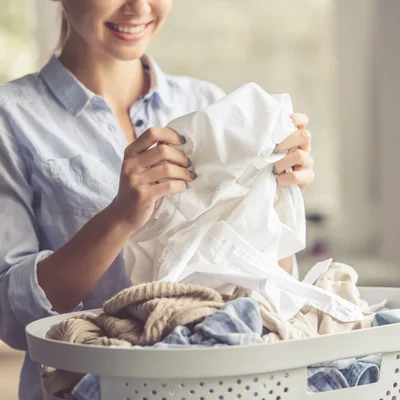
How To Wash Modal Clothing
By now, after reading the long list of benefits of using and wearing Modal fabric, you’re probably ready to give this cotton alternative a try. But before you click “add to cart”, it would be best to get an idea of how to care for Modal fabric.
Generally, Modal is very easy to care for as it is machine-washable and not very sensitive to temperature. Nonetheless, most Modal garments are a blend of multiple fibers. So it would be best to read the specific instructions on your clothing’s label. We’ve also created a guide chock full of eco-friendly laundry tips.
Here are some Modal fabric washing instructions to keep in mind:
- Wash in cold water. Pure Modal fabric can be washed at any water temperature, but cold water is always the best option
- Aside from being toxic, Chlorine bleach can take away Modal’s natural strength. So it would be best to use an oxygen-based bleach. Have a look at our favorite eco-friendly laundry detergents and odor removers to find the ones that work for you and your needs
- Choose low or medium heat for drying and don’t forget to immediately remove your Modal clothing from the dryer while they are still a little bit damp a bit to avoid wrinkling
That’s it! Your sustainable Modal fabric is safe and sound. You can now freely store them in an area away from direct sunlight.
Now that you know how Modal is made, how it feels like, and the many advantages of Modal fabrics including the biggest one – sustainability, duhh – it’s time to get familiar with the best Modal clothing brands of 2024. Your capsule wardrobe will thank you.
*PS, we also have a full list of Tencel Clothing Brands –aka Modal’s older brother.
Which Brands Use Modal Fabric?
1. Threads 4 Thought
Threads for Thought’s women, men, and kids’ sustainable fashion collections are made of an array of different eco-conscious materials, including Lenzing Modal harvested from beech trees. Their main factory recycles 80% of its industrial wastewater. In fact, last year they saved over 500 million gallons of water. What’s more, the company proudly holds two certifications: Fair Trade USA certified and Worldwide Responsible Accredited Production-certified. Their innovative Invincible fabrics are Bluesign certified to boot.
Size Range: XXS to 3XL
Price: $
Ethics: Fair labor, organic materials, ethical production, two sustainability certifications
Location/Shipping: USA, worldwide shipping available
2. Alder Apparel
Alder Apparel is a size-inclusive, slow fashion brand that uses Modal fabric along with many more eco-friendly textiles the ultimate outdoorsy collection of six pieces that fit seamlessly into our pre-existing rotation.
From cargo pants and fleece jackets to weather-approved hats, tops, and dresses, every piece is the epitome of comfort, durability, versatility, and style.
On top of that, they only partner with ethical, transparent factories around the world to create clothing in safe conditions.
Size Range: S-6XL
Price: $
Ethics: Sustainable & recycled fabrics, fair labor, recyclable tags
Location/Shipping: USA, ships to Canada
3. Woronstore
Lauded as one of the best affordable sustainable underwear brands with Modal fabric, the Copenhagen-based company Woronstore is very vocal about its ethics and values.
They partnered with Oeko-Tex-Certified Factories to create bras, panties, period underwear, loungewear, and socks as ethically as possible. No toxic dyes, no chafing & no metal pokes! Just plant-based powered comfort that will last you for years to come.
Size Range: XS-XL
Price: $
Ethics: Made In Europe With Sustainable Materials, Oko-Tex-Certified Factories, Plant-Based Dyes, Peta-Approved, Fair Labor
Location/Shipping: Sold from Denmark, worldwide shipping available
4. Wuka Period Panties
If you are on the hunt for the most sustainable period underwear crafted ethically with certified biodegradable Modal by Lenzing, WUKA should be on your radar.
The female-led company ships fair trade underwear from the UK in FSC-certified packaging and supports an array of amazing causes.
Size Range: XS-2XL
Price: $
Ethics: Female-Led Brand, Carbon-Neutral, Certified Organic Cotton, Tencel Modal & Econyl, Oeko-Text Certified Textiles, Eco-Friendly Packaging, Donations
Location/Shipping: UK, worldwide shipping available
5. LA Relaxed
LA Relaxed may be known as the ultimate destination for super soft sustainable leggings and splurge-worthy linen dresses, but did you know that they also use Modal fabric to create cozy cardigans and sweaters? Yes, the woman-owned brand that works with BLUESIGN- certified local dye houses and commits to strict GOTS standards, has all our sartorial needs covered.
Sizes: XS – 2XL
Price Range: $-$$
Ethics: Made in LA, Woman Owned Business, Ethical, Small Batch Production, GOTS Certified, Fair Trade
Locations: USA, worldwide shipping available
Modal Fabric Guide: Manufacturing, Advantages & Sustainability
Modal fabric, made from spinning beech tree cellulose, is one of the most sustainable, durable, breathable, and stretchy textiles. The semi-synthetic fiber is known for being sweat-resistant and moisture-wicking. On top of that, Modal is 50% more absorbent than cotton, which is a big plus.
However, what makes this eco-friendly fabric shine is its ability to biodegrade in just a few weeks. If you take proper care of your Modal clothing, they’ll remain a wardrobe staple for years.
Looking for more sustainable articles like this one?
Like it? Share it on Pinterest!
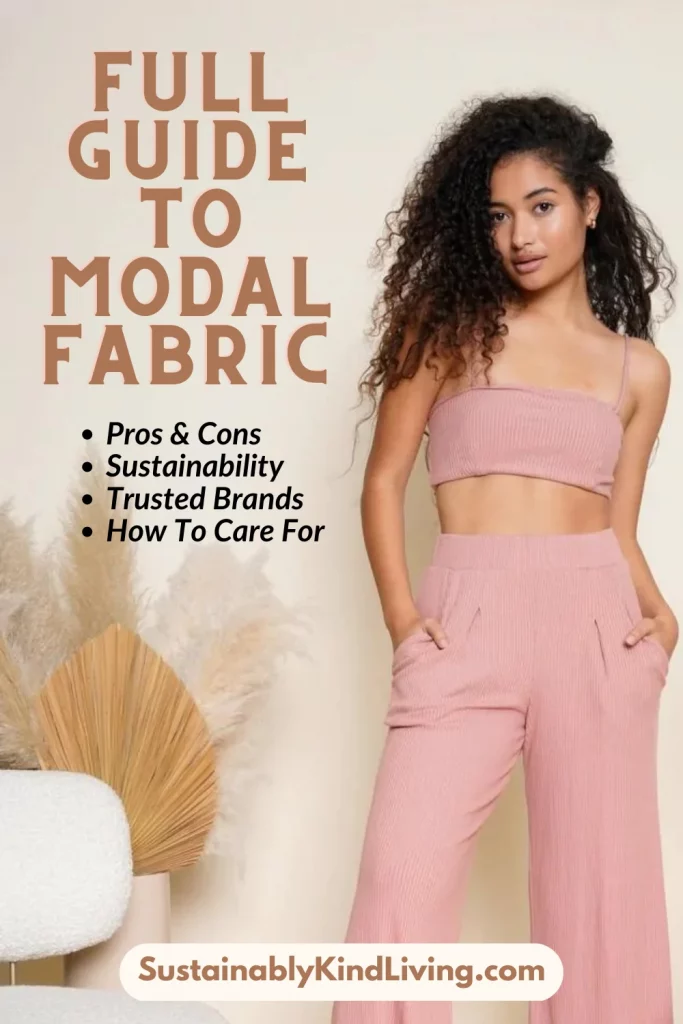
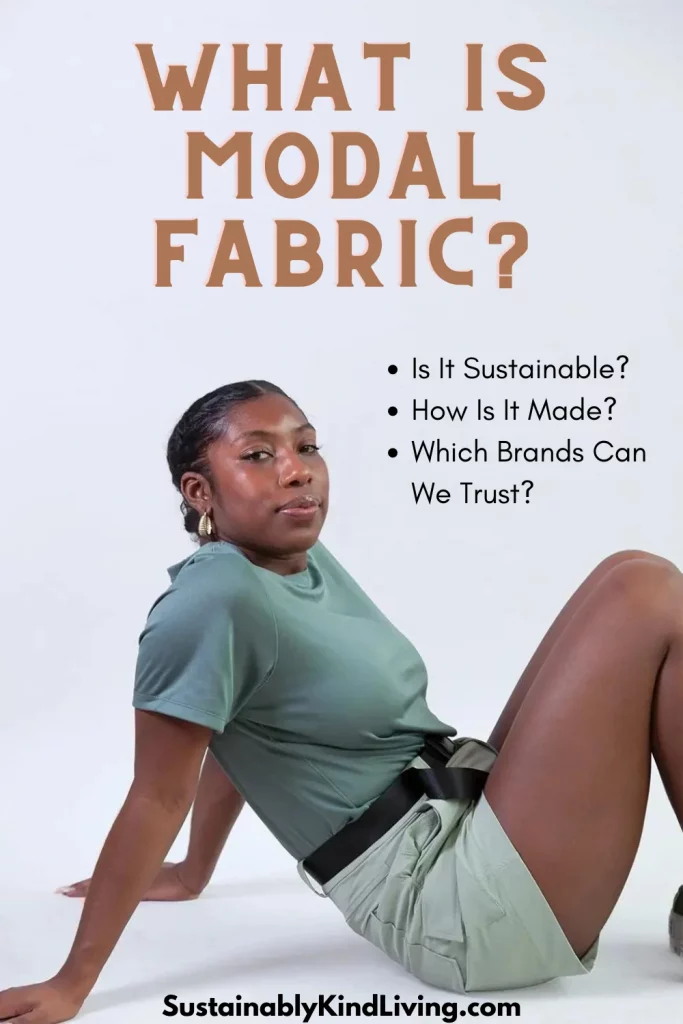
 Enter To Win Over $1500+ In Non-Toxic Goodies!
Enter To Win Over $1500+ In Non-Toxic Goodies! 